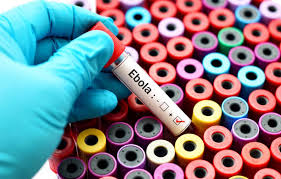
Breaking News
 Victor Davis Hanson: What the Media Won't Tell You About John Bolton FBI Raid
Victor Davis Hanson: What the Media Won't Tell You About John Bolton FBI Raid
 Giving Ukraine a US Security Guarantee Risks National Suicide
Giving Ukraine a US Security Guarantee Risks National Suicide
 The Oklahoma City Bombing: A Lesson in Government Lawlessness
The Oklahoma City Bombing: A Lesson in Government Lawlessness
 The Insurrection Act – Can the POTUS Deploy the National Guard to America's Cities?
The Insurrection Act – Can the POTUS Deploy the National Guard to America's Cities?
Top Tech News
 NVIDIA just announced the T5000 robot brain microprocessor that can power TERMINATORS
NVIDIA just announced the T5000 robot brain microprocessor that can power TERMINATORS
 Two-story family home was 3D-printed in just 18 hours
Two-story family home was 3D-printed in just 18 hours
 This Hypersonic Space Plane Will Fly From London to N.Y.C. in an Hour
This Hypersonic Space Plane Will Fly From London to N.Y.C. in an Hour
 Magnetic Fields Reshape the Movement of Sound Waves in a Stunning Discovery
Magnetic Fields Reshape the Movement of Sound Waves in a Stunning Discovery
 There are studies that have shown that there is a peptide that can completely regenerate nerves
There are studies that have shown that there is a peptide that can completely regenerate nerves
 Swedish startup unveils Starlink alternative - that Musk can't switch off
Swedish startup unveils Starlink alternative - that Musk can't switch off
 Video Games At 30,000 Feet? Starlink's Airline Rollout Is Making It Reality
Video Games At 30,000 Feet? Starlink's Airline Rollout Is Making It Reality
 Automating Pregnancy through Robot Surrogates
Automating Pregnancy through Robot Surrogates
 Grok 4 Vending Machine Win, Stealth Grok 4 coding Leading to Possible AGI with Grok 5
Grok 4 Vending Machine Win, Stealth Grok 4 coding Leading to Possible AGI with Grok 5
Scientists Discover Surprising Weapon In Fight Against Brain Tumors: Ebola Virus

"The irony is that one of the world's deadliest viruses may be useful in treating one of the deadliest of brain cancers," comments Yale's Anthony van den Pol, professor of neurosurgery, in a release.
This unlikely medical collaboration takes advantage of a fundamental weakness in cancerous tumors. Most cancer cells are unable to defend themselves with an immune response against viruses. This fact has caused researchers to test out the use of viruses in the fight against cancer. Of course, using viruses for medical purposes carries some inherent risk; viruses can potentially lead to dangerous infections in cancer patients.
So, in an effort to mitigate that risk, the team at Yale have been experimenting with producing and testing out chimeric viruses, or artificially created viruses created using a combination of genes from various viruses. Ideally, these chimeric viruses should be able to target and attack cancer cells without actually harming or infecting patients.

 HERE COMES THE MOTHERSHIP
HERE COMES THE MOTHERSHIP

